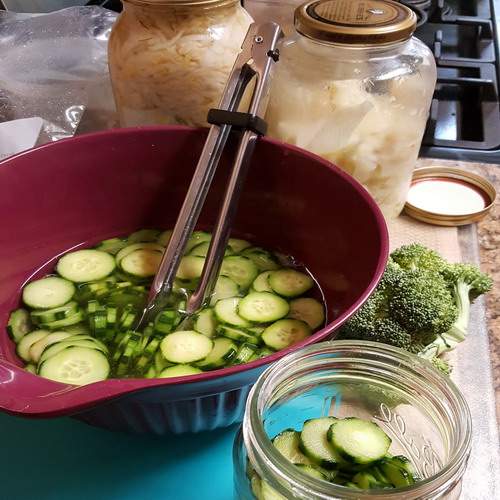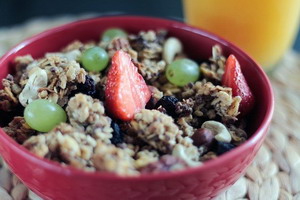 A couple of weeks ago a study was published by researchers at the Stanford School of Medicine on the results of comparing the effects of a 10-week diet high in fiber compared to a diet high in fermented vegetables. There has been a ton of research showing how the lack of fiber in the diet is associated with not only digestive disease but virtually all the modern diseases of our time. The assumption going into the study was that they would find all sorts of positive health-promoting results from adding fiber into the participants’ diet, but they were curious about how adding fermented vegetables into the diet would affect things. They figured that since fermented foods had lots of good bacteria in them that the fermented foods would improve the gut microbiome. They wondered what else would show up. The results of the study were a complete surprise!
A couple of weeks ago a study was published by researchers at the Stanford School of Medicine on the results of comparing the effects of a 10-week diet high in fiber compared to a diet high in fermented vegetables. There has been a ton of research showing how the lack of fiber in the diet is associated with not only digestive disease but virtually all the modern diseases of our time. The assumption going into the study was that they would find all sorts of positive health-promoting results from adding fiber into the participants’ diet, but they were curious about how adding fermented vegetables into the diet would affect things. They figured that since fermented foods had lots of good bacteria in them that the fermented foods would improve the gut microbiome. They wondered what else would show up. The results of the study were a complete surprise!
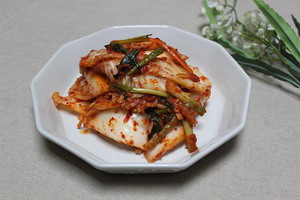 As expected the fermented vegetable group showed an increase in microbial diversity across a wide range of people – the more kinds of good bacteria you have the healthier you are. Although this result was assumed, apparently no one had actually tested this with a large group of people. Of greater interest was that four different kinds of gut immune cells calmed down and 19 different markers of inflammation also came down. The fermented vegetable diet seriously decreased inflammation in the guts of the study group. Now here is the kicker. The high fiber group had no increase in microbial diversity and no decrease in inflammatory markers or down-regulation of the overactive immune cell types. What the heck! Fiber is supposed to be super good for you, and here it is doing nothing. What is going on?
As expected the fermented vegetable group showed an increase in microbial diversity across a wide range of people – the more kinds of good bacteria you have the healthier you are. Although this result was assumed, apparently no one had actually tested this with a large group of people. Of greater interest was that four different kinds of gut immune cells calmed down and 19 different markers of inflammation also came down. The fermented vegetable diet seriously decreased inflammation in the guts of the study group. Now here is the kicker. The high fiber group had no increase in microbial diversity and no decrease in inflammatory markers or down-regulation of the overactive immune cell types. What the heck! Fiber is supposed to be super good for you, and here it is doing nothing. What is going on?
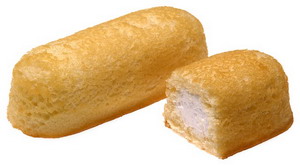 Part of the answer was probably mentioned in my article last week about new gut information. Part of what was uncovered is that the lack of fiber is not an issue in our diet. But in the studies, it looks that way, because the lack of fiber is a good proxy for what is really the problem – the level of processing of our food. The more you process food, the lower the fiber levels it has. But the processing does a lot more than just remove fiber. It changes how our food is digested, making it digest much too rapidly and be absorbed in the upper part of the small intestine where it triggers the release of too much GIP hormone and not enough of the GLP-1 hormone. The fiber is not relevant. It was simply something the researchers could identify easily that was different between hunter-gatherer diets and modern diets. It was a nice idea, but wrong. That happens a lot in science. The cholesterol myth is a good example.
Part of the answer was probably mentioned in my article last week about new gut information. Part of what was uncovered is that the lack of fiber is not an issue in our diet. But in the studies, it looks that way, because the lack of fiber is a good proxy for what is really the problem – the level of processing of our food. The more you process food, the lower the fiber levels it has. But the processing does a lot more than just remove fiber. It changes how our food is digested, making it digest much too rapidly and be absorbed in the upper part of the small intestine where it triggers the release of too much GIP hormone and not enough of the GLP-1 hormone. The fiber is not relevant. It was simply something the researchers could identify easily that was different between hunter-gatherer diets and modern diets. It was a nice idea, but wrong. That happens a lot in science. The cholesterol myth is a good example.
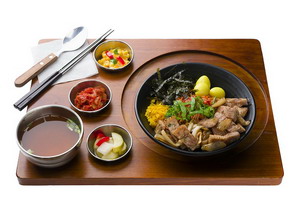 So there you go, fermented vegetables are the heroes we are looking for, not fiber. Fiber is still good for feeding the good bacteria so they can make butyrate, which feeds the gut cells and the brain as well. But fiber is apparently not the big savior we all thought it was. The day after that article came out, I picked up a big container of Kimchi and have been feeding it to Ellen and myself every morning. It reminds me of when I visited my son in Japan while he was going to college there. The humble hotel we stayed in served us breakfast every morning before we headed out for the day’s adventures. Every breakfast had three or four different fermented vegetables along with a protein and a starch. Most of them were quite delicious, and all of them were very new to my palate.
So there you go, fermented vegetables are the heroes we are looking for, not fiber. Fiber is still good for feeding the good bacteria so they can make butyrate, which feeds the gut cells and the brain as well. But fiber is apparently not the big savior we all thought it was. The day after that article came out, I picked up a big container of Kimchi and have been feeding it to Ellen and myself every morning. It reminds me of when I visited my son in Japan while he was going to college there. The humble hotel we stayed in served us breakfast every morning before we headed out for the day’s adventures. Every breakfast had three or four different fermented vegetables along with a protein and a starch. Most of them were quite delicious, and all of them were very new to my palate.
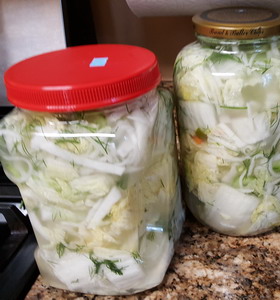 Now I have made my own sauerkraut from shredded cabbage for years. Generally, I will make up a couple of quarts at a time. I will be good about eating it for a few days, but then I slip and forget about it for a few months until I end up having to throw the remainder out. The problem for me is that fermented cabbage in this form is too sour/strong for me. I find Kimchi to be much lighter and “sweeter” as it is made from Napa cabbage. I use the white Kimchi that does not have all the red pepper in it. Most Kimchi is drenched in cayenne pepper – too spicy for me, but Korean’s seem to love it.
Now I have made my own sauerkraut from shredded cabbage for years. Generally, I will make up a couple of quarts at a time. I will be good about eating it for a few days, but then I slip and forget about it for a few months until I end up having to throw the remainder out. The problem for me is that fermented cabbage in this form is too sour/strong for me. I find Kimchi to be much lighter and “sweeter” as it is made from Napa cabbage. I use the white Kimchi that does not have all the red pepper in it. Most Kimchi is drenched in cayenne pepper – too spicy for me, but Korean’s seem to love it.
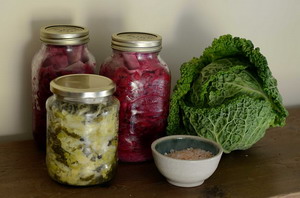 So what is the great Gut Reset I started this article with all about? You can probably guess. It basically is all about eating a ton of naturally fermented foods for several weeks. Around here the grocery stores will have such fermented foods as real sauerkraut, fermented pickles, kombucha, kefir, real yogurt, aged real cheese, and technically unpasteurized beer and wine also qualify as fermented foods. Unless you are really good with dairy products, I would avoid them as a fermented food source. I make my yogurt from coconut milk. Many cultures use fermented kinds of milk from a variety of animals as their fermented food source. Every culture has its own source of fermented foods. I was amazed when I looked up fermented foods on Wikipedia – there are hundreds of foods I had never heard of from all over the world.
So what is the great Gut Reset I started this article with all about? You can probably guess. It basically is all about eating a ton of naturally fermented foods for several weeks. Around here the grocery stores will have such fermented foods as real sauerkraut, fermented pickles, kombucha, kefir, real yogurt, aged real cheese, and technically unpasteurized beer and wine also qualify as fermented foods. Unless you are really good with dairy products, I would avoid them as a fermented food source. I make my yogurt from coconut milk. Many cultures use fermented kinds of milk from a variety of animals as their fermented food source. Every culture has its own source of fermented foods. I was amazed when I looked up fermented foods on Wikipedia – there are hundreds of foods I had never heard of from all over the world.
 The other half of the Gut Reset is to completely avoid processed foods for several weeks (or preferable the rest of your life.) Unless you are living out of the garden in your backyard, avoiding processed foods is a challenge. It means you eat vegetables, fruits, and unprocessed meats. You avoid any foodstuffs where milling, grinding, precooking, chemically treating, puffing, mashing, or any other mechanical anything has been done to the food. If it comes in a package that lists more than one or two ingredients, don’t eat it. Roasting your tubers and meats is probably okay and drying your fruits is also okay. Steaming and a quick pan fry is also probably okay. That’s about it. The food has to be whole, so no fruit juices or vegetable smoothies. Don’t run your food through your food processor or blender. You want your food to require chewing.
The other half of the Gut Reset is to completely avoid processed foods for several weeks (or preferable the rest of your life.) Unless you are living out of the garden in your backyard, avoiding processed foods is a challenge. It means you eat vegetables, fruits, and unprocessed meats. You avoid any foodstuffs where milling, grinding, precooking, chemically treating, puffing, mashing, or any other mechanical anything has been done to the food. If it comes in a package that lists more than one or two ingredients, don’t eat it. Roasting your tubers and meats is probably okay and drying your fruits is also okay. Steaming and a quick pan fry is also probably okay. That’s about it. The food has to be whole, so no fruit juices or vegetable smoothies. Don’t run your food through your food processor or blender. You want your food to require chewing.
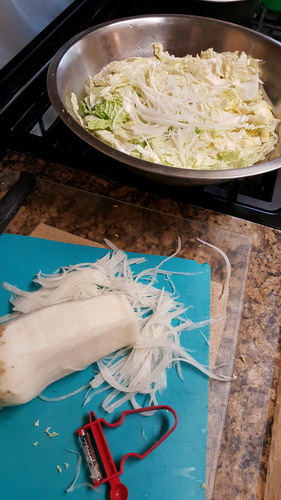 Being a DIY person, I also picked up Napa cabbage and a big Asian radish with which to make my own Kimchi. It is really simple to make. Start with a big bowl and make a brine in it with about a quart of water and 1/3 cup of real salt. Roughly chop up your cabbage and julienne your radish and submerge it in the brine. I use a plate with a full bottle of water on the plate to hold the vegetables under the brine. Let it sit for a day. This salt bath kills off the bad guy microbes. The next day pull your vegetables out of the brine and stuff them into a wide mouth jar. I add enough liquid from my existing Kimchi to cover the vegetables, or I add probiotics to some of the brine and then pour it over the veggies. This will give the veggies a head start and help them ferment faster, but this step is not necessary. There are enough fermentation bacteria in the air to start a wild fermentation in your Kimchi. Put a lid on the jar, but do not tighten it. Stick it in a corner of the kitchen for a few days. It will start to bubble and liquid will ooze out the top, which is normal as the bacteria that are growing produce gas. Depending upon how sour you like your end product, you can let this ferment for several days to up to a couple of weeks. When it is where you like it, just put it into the fridge where it will last for months.
Being a DIY person, I also picked up Napa cabbage and a big Asian radish with which to make my own Kimchi. It is really simple to make. Start with a big bowl and make a brine in it with about a quart of water and 1/3 cup of real salt. Roughly chop up your cabbage and julienne your radish and submerge it in the brine. I use a plate with a full bottle of water on the plate to hold the vegetables under the brine. Let it sit for a day. This salt bath kills off the bad guy microbes. The next day pull your vegetables out of the brine and stuff them into a wide mouth jar. I add enough liquid from my existing Kimchi to cover the vegetables, or I add probiotics to some of the brine and then pour it over the veggies. This will give the veggies a head start and help them ferment faster, but this step is not necessary. There are enough fermentation bacteria in the air to start a wild fermentation in your Kimchi. Put a lid on the jar, but do not tighten it. Stick it in a corner of the kitchen for a few days. It will start to bubble and liquid will ooze out the top, which is normal as the bacteria that are growing produce gas. Depending upon how sour you like your end product, you can let this ferment for several days to up to a couple of weeks. When it is where you like it, just put it into the fridge where it will last for months.
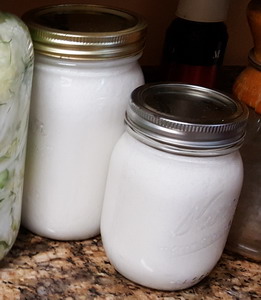 You can ferment all kinds of things. One of my patients, Mary, brought me some zucchini, so I decided to ferment them. I used the same process as above but according to some sites I found on the internet, zucchini take a couple of weeks. My coconut yogurt is super simple. I mix a can of coconut milk with an equal amount of filtered water and open a couple of capsules of lactobacillus probiotic into it. I shake it up and put it into to corner for a couple of days. What could be simpler? Coconut milk yogurt does not get real solid, so I can drink it like kefir, or I will add chia seeds to it and let them thicken it up.
You can ferment all kinds of things. One of my patients, Mary, brought me some zucchini, so I decided to ferment them. I used the same process as above but according to some sites I found on the internet, zucchini take a couple of weeks. My coconut yogurt is super simple. I mix a can of coconut milk with an equal amount of filtered water and open a couple of capsules of lactobacillus probiotic into it. I shake it up and put it into to corner for a couple of days. What could be simpler? Coconut milk yogurt does not get real solid, so I can drink it like kefir, or I will add chia seeds to it and let them thicken it up.
 If you really want to take this Gut Reset to the next level like Ellen and I are doing, eliminate all other food and just consume the fermented veggies for a week. This will move you into ketosis first and then into autophagy. Autophagy is the great healer of all sorts of diseases, as this is when your body “takes out the trash” that has accumulated inside the cells by recycling damaged proteins. Autophagy is also the only way I know to get your body to eat up excess flabby skin. That skin is a protein your body will recycle if given the chance. So great things can happen when you step up to giving yourself a great Gut Reset.
If you really want to take this Gut Reset to the next level like Ellen and I are doing, eliminate all other food and just consume the fermented veggies for a week. This will move you into ketosis first and then into autophagy. Autophagy is the great healer of all sorts of diseases, as this is when your body “takes out the trash” that has accumulated inside the cells by recycling damaged proteins. Autophagy is also the only way I know to get your body to eat up excess flabby skin. That skin is a protein your body will recycle if given the chance. So great things can happen when you step up to giving yourself a great Gut Reset.
Take care,
David
